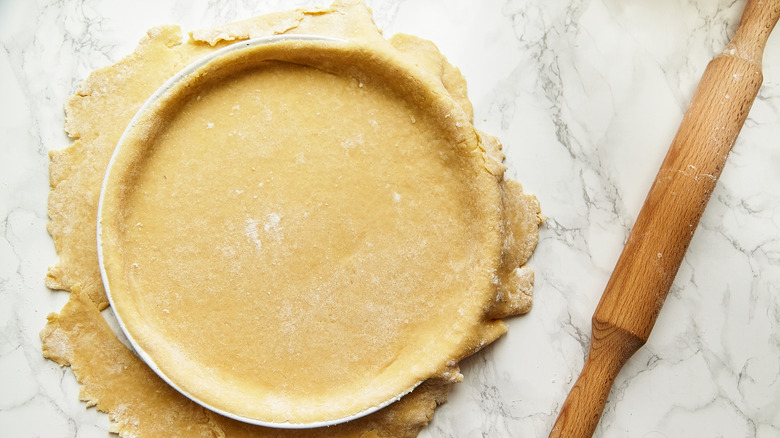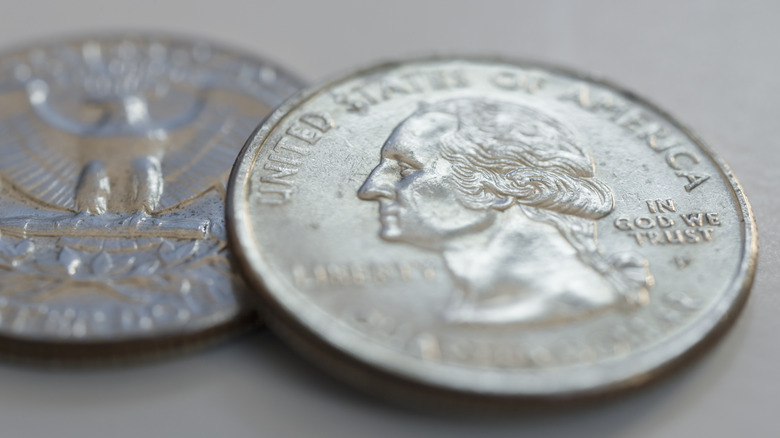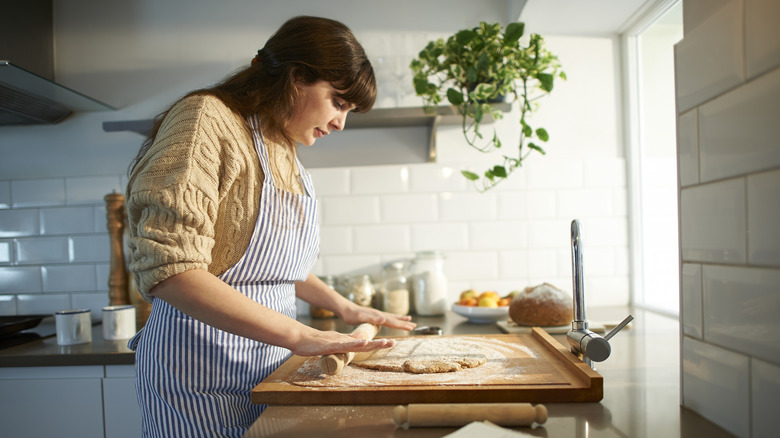This Genius Coin Hack Perfectly Measures The Thickness Of Pie Crust
Looking to impress your friends and family with your pie-baking prowess? It all starts with the crust. Sure, you could buy the pre-made variety at your local grocery store, but everyone knows that homemade is always better. The key to ensuring your pie crust hits all the right notes lies in making sure it is neither too thick nor too thin. Too thick and you might wind up with an undercooked doughy crust, too thin and you could risk your filling seeping through and creating a sticky mess.
So what's a home baker to do when it comes to crafting the ultimate crust? Whip out your coin purse! That's right, the only tool you need (besides a rolling pin) to ensure the ideal thickness each and every time is a couple of quarters. No need to resort to the eyeball method and risk messing up; simply grab two quarters and stack them on top of one another to gauge the perfect depth.
How to use change to make your crust
Ask any master baker and they'll tell you that pie crust should measure approximately ⅛ of an inch thick. Nothing's worse than a burnt crust — because let's face it, the crust is the best part — and no one wants a mouthful of dough when taking a big bite of pie. This specific depth allows your crust to become perfectly flaky without subjecting it to any unnecessary rips or tears. But instead of searching in the back of your desk drawer for a ruler, all you need is two quarters to measure the thickness of your favorite pie crust.
Two quarters stacked atop one another equates to about ⅛ of an inch, the magic number when it comes to crust. While rolling out your dough (don't fret, you can roll out dough without a rolling pin), keep those quarters handy to see how your crust measures up, and adjust the dough thickness accordingly.
Now that you have the depth of the dough squared away, just how big should you be rolling it out in the first place? Most bakers suggest creating a diameter a few inches bigger than your pie pan. So if you're working with a 9-inch pan, your dough should measure out somewhere between 11 and 13 inches, depending on preference.
Other tips for creating your crust
Aside from making sure your crust is just the right thickness, there are other tips to create that buttery, crumbly pie crust we all know and love. For instance, it's important to chill your dough before you begin the rolling process. Chilling the dough helps to solidify the fat, which allows the dough to maintain its structure during both the rolling and baking processes.
Before you start rolling out your dough, make sure you sprinkle both the surface and rolling pin with some flour to help prevent any sticking. In keeping with the anti-stick theme, experts recommend giving your dough a quarter turn after every roll. This method not only prevents sticking but also helps you to maintain a consistent thickness throughout the entire crust.
When it comes time to transfer that well-made dough to your pan, stick with your handy rolling pin — after all, it hasn't steered you wrong yet. Roll your dough onto and around the pin, then place the pin over your pan, and simply unroll your dough directly into your pan. Voila! As it turns out, making pie crust from scratch isn't too tricky after all.


